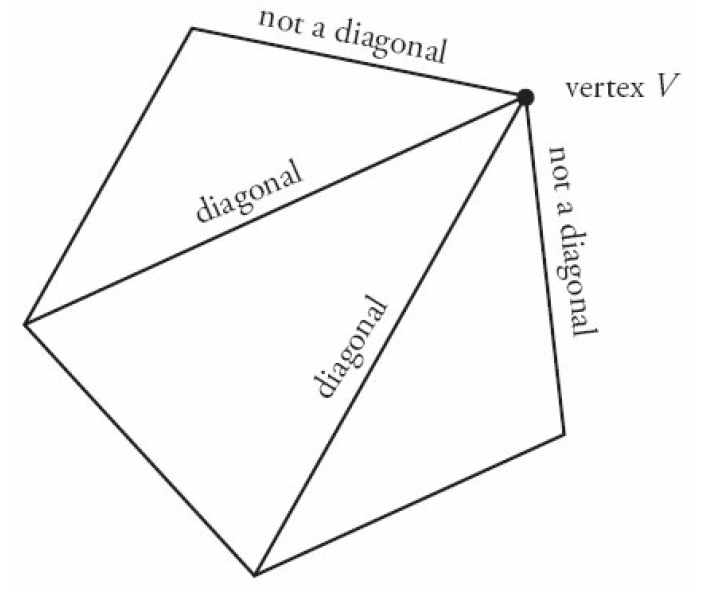ExplanationA diagonal of a polygon is an internal line segment connecting any two unique vertices; this line segment does not lie along an edge of the given shape. Consider a polygon with 12 vertices.
Construct a diagonal by choosing any two vertices and connecting them with a line. Remember that this is order independent; the line is the same regardless of which is the starting vertex. Therefore, this is analogous to choosing any 2 elements from a set of 12, and can be written as \(\frac{12!}{10! \times 2!}= 6 \times 11 = 66\).
However, this method includes the vertices connected to their adjacent vertices, which form edges instead of diagonals. In order to account for this, subtract the number of edges on the polygon from the above number: 66 – 12 = 54.
Alternatively, choose a random vertex of the 12-sided shape. There are 12 – 1 = 11 lines that can be drawn to other vertices since no line can be drawn from the vertex to itself. However, the lines from this vertex to the two adjacent vertices will lie along the edges of the polygon and therefore cannot be included as diagonals (see the figure of a pentagon below for an example):
Attachment:
 Capture.PNG [ 116.3 KiB | Viewed 17632 times ]
Capture.PNG [ 116.3 KiB | Viewed 17632 times ]
Thus, there are 12 – 1 – 2 = 9 diagonals for any given vertex. Since there are 12 vertices, it is tempting to think that the total number of diagonals is equal to (12)(9) = 108.
However, this scheme counts each diagonal twice, using each side of the diagonal once as the starting point. Therefore, there are half this many different diagonals: \(\frac{108}{2}= 54\).









 62% (01:14) correct
62% (01:14) correct







